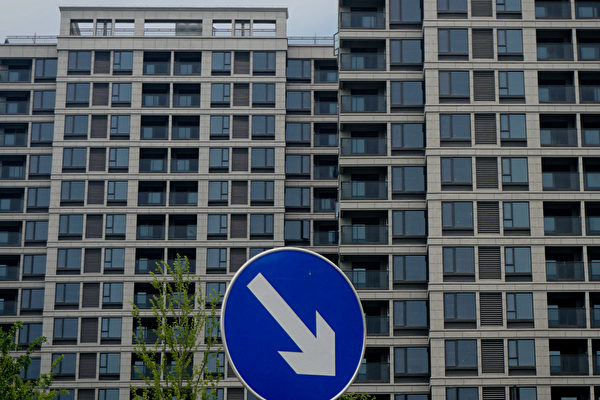In a report from October 8, 2024, China’s real estate market continues to slump, with house prices in 95 Chinese cities plummeting dramatically. Analysis suggesting that a large number of middle-class individuals in mainland China will be crushed by the real estate market pressure is constantly emerging.
The definition of “middle class” in China is not very clear. It is generally agreed upon among mainland Chinese that individuals in first and second-tier cities who own one or more properties and have relatively decent incomes are likely to be classified as middle-class families.
The asset allocation of middle-class families in China often leans towards the real estate sector. During the period of rising property prices, they accumulated wealth through their relatively unique perspective and forward-thinking mindset.
Since China’s crackdown on the high leverage issue in the property market in 2020, house prices in China have fallen by approximately 30% from their peak in 2021, dealing a severe blow to the Chinese economy.
The continued decline in the real estate industry has led to widespread drops in property prices. According to mainland financial media reports, cities with “He-Gang-style” property prices can be found in 25 provinces across the country. Economically prosperous regions such as the Beijing-Tianjin-Hebei area, the Pearl River Delta, and the Chengdu-Chongqing region are also surrounded by such “He-Gang-style” cities.
As house prices in China plummet sharply, there are increasing analyses suggesting that a large number of middle-class individuals will be “doomed” by real estate.
Some bloggers analyze that 70% of the wealth of Chinese middle-class families comes from houses. This percentage is abnormal on a global scale, as no other country has real estate accounting for 70% of household wealth. In many first and second-tier cities in China, a large number of middle-class individuals have accumulated assets in real estate. The residents’ leverage ratio has reached 63%, the highest in the world. Therefore, as house prices continue to fall, most middle-class individuals have little ability to withstand the risks.
Recently, blogger “Forward Lake” shared that a friend of hers in Shanghai incurred a loss of 3 million yuan when selling a house.
In 2017, her friend purchased a house in Shanghai for 6.2 million yuan, at a rate of 92,000 yuan per square meter, to take care of their family while working on a business partnership. They thought the house was a good purchase as its value rose slightly after the purchase. However, when they tried to sell it, there was no significant interest. Eventually, a potential buyer offered 5 million yuan, which made her friend realize the losses incurred. Watching as house prices continued to plummet, the final transaction price ended up at 3.2 million yuan – half of the original price, resulting in a loss of 3 million yuan.
Blogger “Yellow Yellow” stated that the trend of the middle class turning against poverty has become a certainty since most middle-class individuals in China own two or more houses. Real estate constitutes all of their assets. There is a significant difference between China’s middle class and that of other countries – their preference for real estate in asset allocation, and the lack of readily available cash. Buying a house is the first thought that comes to mind when they have money on hand. Not investing in real estate is seen as a waste of funds by these middle-class individuals. Therefore, the vast majority of the middle class in China have their funds tied up in houses, and on average, own two or more properties.
Data shows that the homeownership rate for one house in Chinese households is over 90%, while for two houses or more, it is above 40%.
“Yellow Yellow” pointed out that these households with two or more properties account for the middle class in China. The 25-year long upward cycle in China’s real estate market from 1998 to 2022 has come to an end. As we enter 2023, the real estate market will possibly face a downward cycle lasting up to 30 years. In this 30-year downward cycle, house prices will experience a prolonged slow decline, occasionally with accelerated drops. Only when property prices in all Chinese cities reach reasonable levels will the decline gradually stop.
He believes that in the continuous slow decline of house prices over the next 30 years, the group most affected will be the middle-class individuals who previously bought two or more houses.
“During this process, the vast majority of them have purchased houses using loans, carrying heavy mortgage debts. They will have to deal with uncertainties such as stable income growth, job stability, family health, avoiding serious illnesses, children’s education abroad, and ensuring that costs of living, education, healthcare, mortgage, etc., do not rise or gradually decrease in the long term. Any crisis in one aspect can lead to a risk of default, resulting in a substantial shrinkage of assets.”
“Yellow Yellow” confidently asserts that as house prices continue to fall and the population in China decreases, the oversupply of houses will worsen. Authorities may introduce policies such as property taxes and vacancy taxes, which will further worsen the situation for middle-class individuals who own two or more houses. With falling house prices, the assets of those who own houses will only shrink continuously. It is foreseeable that the trend of the middle class turning against poverty has become inevitable.

